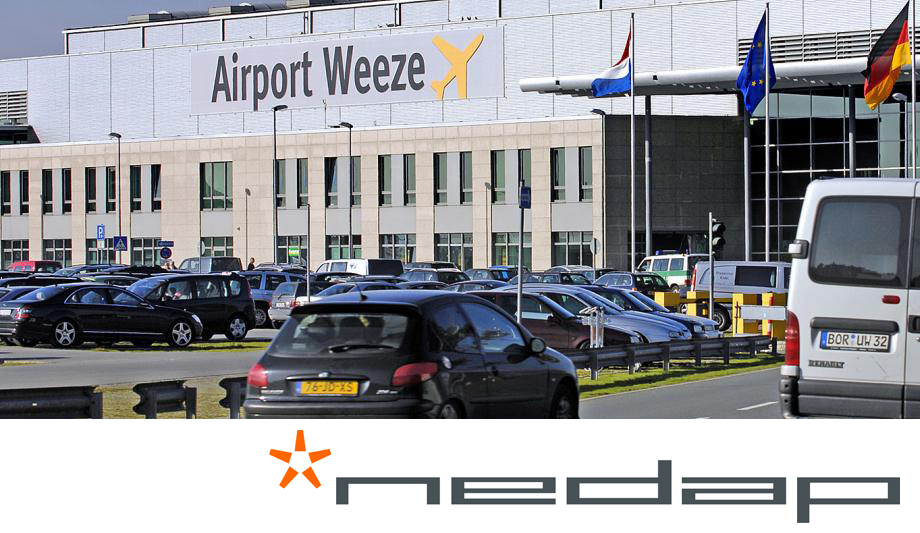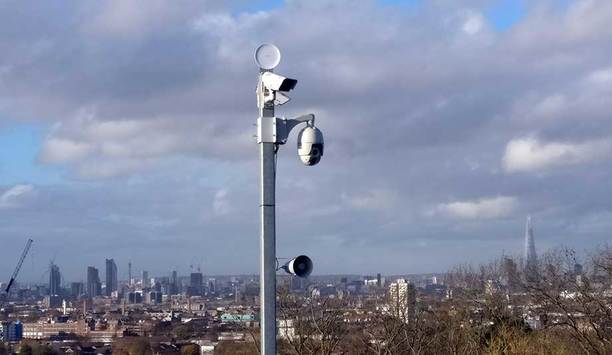Ten million inhabitants of Germany and the Netherlands live within 60 minutes’ drive from Airport Weeze, making it an important gateway in the region. To comply with the highest standards of airport security, Airport Weeze updated and improved its security measures.
On May 1 2003 the airport started scheduled flights. The numbers of passengers were impressive right from the start. A respectable 207,992 passengers already passed through in the first year and by 2012 this had risen to approximately 3,500,000 travelers. With such large numbers of passengers, Airport Weeze had to find a solution for a problem that many airports have to deal with: How to keep people from freely entering the secure side of the airport.
Invisible Turnstile
As at any other airport, passengers at Airport Weeze leave the airport through sliding doors behind the section where they can declare goods. These sliding doors constantly open and close, making it possible for people on the unsecured side to freely enter the secure side of the airport. This poses a potential security risk and so a need was identified for a reliable ‘turnstile’ system. The solution was provided by one of Nedap’s German business partners, who installed radar above the sliding doors that controls the direction of movements in the area. The radar detects when somebody walks into the area in the opposite direction, setting off a visual and acoustic alarm in the control room, so that the security staff can quickly intervene. This illegal return protection system is integrated into the AEOS security management platform and can be compared to an invisible turnstile that functions effectively like an electronic fence.
Automated Badge Control
AEOS was also used to implement automated badge control. With the module Photo Events, photos and additional data of staff members are displayed in the event monitor of AEOS. This way, the airport security can easily perform visual checks of the crew and anyone else who wants to gain access to the apron and the aircrafts. They are automatically checked, by comparing the photo on their badge with a photo stored in the database. At the same time, the software checks their current access authority and whether the badge is indeed still valid. If it is due to expire, the owner is informed at once so that he has a chance to renew it in time.
IP Video Management
The next step in the process of improving the airport’s security measures is the implementation of AEOS IP Video Management. This AEOS feature is available within AEOS 2.4 and provides a truly native video integration which goes technologically well beyond existing DVR and even open platform based solutions. During the start-up phase, 6 to 10 cameras will be installed at Airport Weeze, which is due to be increased within a few months to 70 cameras. These will record 24 hours a day, 7 days a week. The images of the analog cameras will be converted to digital images, after which they can be viewed live or be looked up from the AEOS Video Face, called Video Viewer. Thanks to the platform’s flexibility, Airport Weeze can freely decide what type of camera they want to use, the way they want to store the video images, what the quality of the video stream should be, and what and when they want to record. Best of all, all security tasks can be handled from one single management platform.
Airport Weeze
Airport Weeze is a unique infrastructure project in West Germany that lies close to the important economic regions of the Ruhr and Rhineland of Germany, and the eastern part of the Netherlands. The airport forms the center of ‘Airport City Weeze’ a business park of 620 ha with a focus on logistics, aviation and leisure. Airport Weeze in its current form is very young. The British have maintained a military air base there since 1954, but left the site in 1999. Two years later a Dutch investor group took over development of the area to implement a new usage concept: out of the former military airport should grow a ‘euregional‘ center for air transport, logistics and industry. Shortly after the handover, a large hangar was converted into a passenger terminal, a new apron was established and the flight operations systems were renovated. German Air Traffic Control set up a tower and on 1 May 2003 the new airport started scheduled flights. The numbers of passengers was impressive right from the start. A respectable 207,992 passengers already passed through in the first year and by 2012 this had risen to approximately 3,500,000 travelers.



















